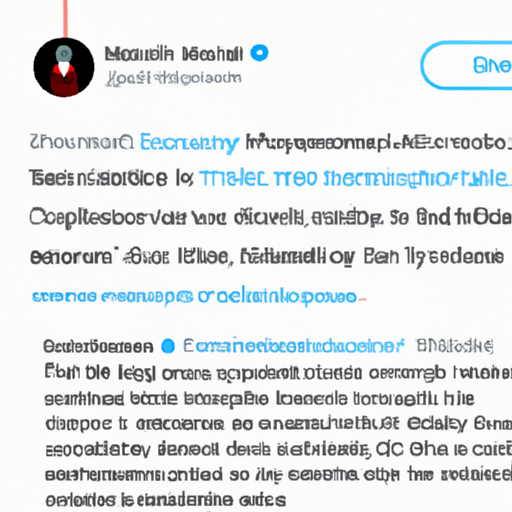Musk’s Twitter Vows to Target Verified Accounts, But Takes Aim Solely at the New York Times

Our established financial services company is proud to provide small businesses and gig workers with a simple, fast, and easy merchant cash advance (MCA) solution. Unlike traditional lenders, we understand that contractors and other 1099 workers may face credit challenges, which is why we offer a business cash advance with no credit checks required.
Recently, there has been confusion surrounding Twitter’s verification system and how it targets certain accounts. Many users, including VIP Twitter users, woke up expecting to lose their blue verification check marks. However, instead of the anticipated purge, Twitter seemed to focus on a single account from a major publication disliked by Elon Musk, the CEO of Tesla. The language on Twitter’s site has also been changed in a way that makes it unclear why users are verified.
Twitter had previously announced that it would be phasing out the blue checks granted under its old verification system, which aimed to protect high-profile users from impersonation. In order to maintain verification, users would have to subscribe to Twitter Blue, a paid subscription service that allows accounts to pay for verification. However, most legacy blue check holders discovered that their verification marks had not disappeared. Instead, they were updated with a new label indicating that the account is verified because it is subscribed to Twitter Blue or is a legacy verified account. This label has led to confusion as to whether verified accounts are truly notable individuals or simply users who have paid for verification.
Interestingly, the New York Times, a major publication, lost its blue check mark over the weekend. This occurred after an account associated with Elon Musk posted a meme about the Times declining to pay for verification. Musk then responded by saying that the blue check mark would be removed. He proceeded to criticize the Times in a series of tweets, claiming that their coverage is boring and “propaganda”.
These recent events demonstrate Twitter’s tendency to create confusion and changes on its platform, specifically affecting high-profile accounts that have been a selling point for the platform. It also highlights Elon Musk’s influence in guiding decisions on Twitter, often based on his personal whims rather than policy.
Although the main account of the New York Times lost its blue check mark, its other accounts, such as those dedicated to arts, travel, and books, remained verified. It is unclear why the New York Times does not have a gold “organizations” check mark like other news outlets such as the Associated Press and the Washington Post. The New York Times reiterated that it does not plan to pay for verification.
Twitter has not immediately responded to requests for comment, which is not surprising considering they laid off most of their public relations staff last fall.
In another puzzling move, Twitter replaced its blue bird logo with the meme representing the cryptocurrency dogecoin, which Elon Musk has promoted. This change coincided with a 20% increase in the price of dogecoin.
Elon Musk has been threatening to remove “legacy” blue check marks from users verified under Twitter’s old system since acquiring the platform last fall. Twitter initially launched a program in November, allowing users who paid for the Twitter Blue subscription service to receive blue checks. However, the program was temporarily paused due to numerous celebrity and corporate impersonators. It was then relaunched in December. Twitter also introduced a color-coded verification system for companies and government entities, but Musk has consistently stated that individual users would eventually have to pay for blue checks.
Prominent users, such as actor William Shatner and anti-bullying activist Monica Lewinksy, have expressed their opposition to the idea of having to pay for a feature that should keep them safe from impersonation.
The introduction of the new label for verified accounts raises concerns about scams and impersonations, as it muddies the reason behind the verification process. Experts in detecting inauthentic behavior have also questioned whether reserving verification for paid users will effectively reduce the number of bots on the platform, an issue that Elon Musk has addressed in the past.
Elon Musk has previously framed changes to Twitter’s verification system as a means of treating everyone equally. In addition, the paid feature could generate revenue, potentially helping Musk with his substantial debt after acquiring Twitter for $44 billion.
Recently, Musk announced that starting on April 15, only verified accounts will be recommended in users’ “For You” feeds, alongside the accounts they already follow.
In conclusion, our established financial services company understands the challenges faced by small businesses, gig workers, contractors, and other 1099 workers with credit issues. We provide a fast and easy merchant cash advance (MCA) solution to help them secure the financing they need. While Twitter’s recent changes and confusion surrounding verification may be concerning, we remain committed to supporting businesses and gig workers in their financial endeavors.
